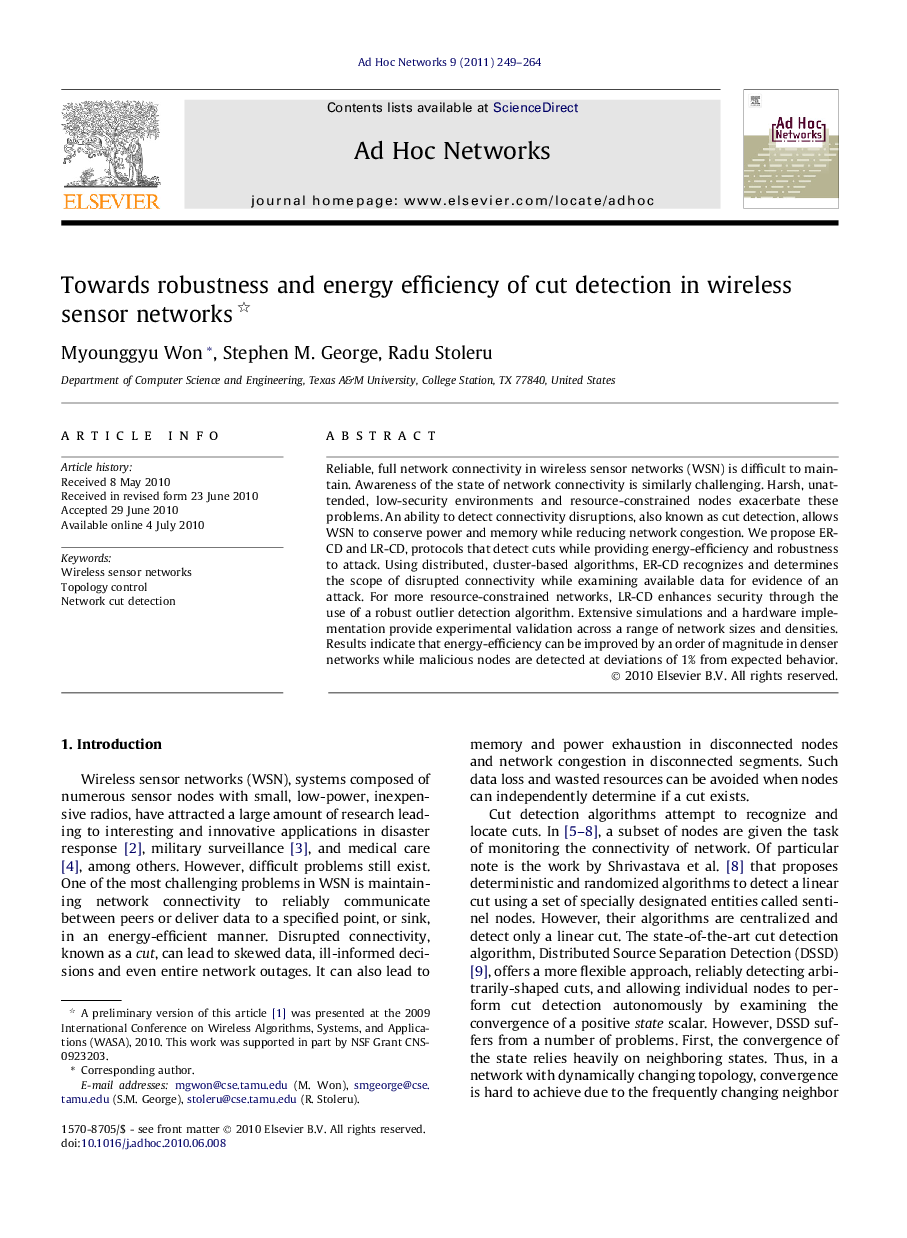| Article ID | Journal | Published Year | Pages | File Type |
|---|---|---|---|---|
| 448326 | Ad Hoc Networks | 2011 | 16 Pages |
Reliable, full network connectivity in wireless sensor networks (WSN) is difficult to maintain. Awareness of the state of network connectivity is similarly challenging. Harsh, unattended, low-security environments and resource-constrained nodes exacerbate these problems. An ability to detect connectivity disruptions, also known as cut detection, allows WSN to conserve power and memory while reducing network congestion. We propose ER-CD and LR-CD, protocols that detect cuts while providing energy-efficiency and robustness to attack. Using distributed, cluster-based algorithms, ER-CD recognizes and determines the scope of disrupted connectivity while examining available data for evidence of an attack. For more resource-constrained networks, LR-CD enhances security through the use of a robust outlier detection algorithm. Extensive simulations and a hardware implementation provide experimental validation across a range of network sizes and densities. Results indicate that energy-efficiency can be improved by an order of magnitude in denser networks while malicious nodes are detected at deviations of 1% from expected behavior.
